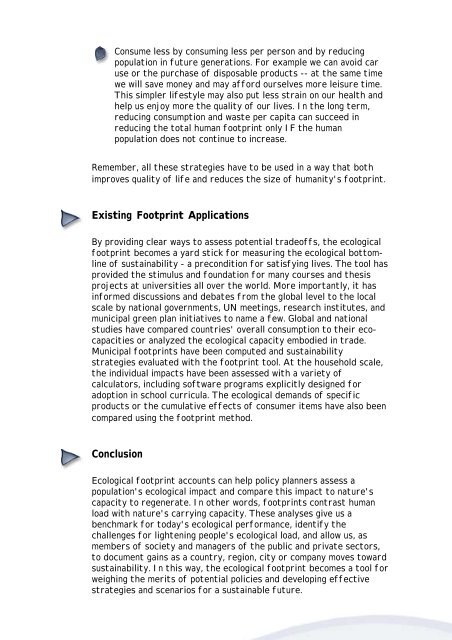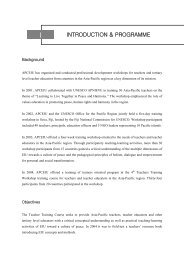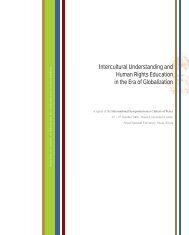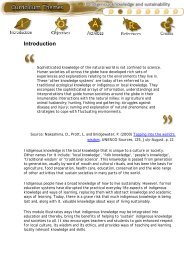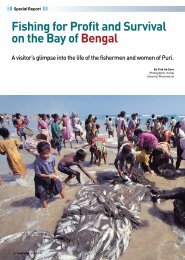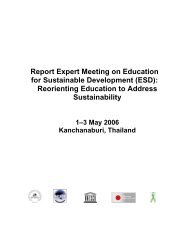Module 9 Consumer education - APCEIU
Module 9 Consumer education - APCEIU
Module 9 Consumer education - APCEIU
Create successful ePaper yourself
Turn your PDF publications into a flip-book with our unique Google optimized e-Paper software.
Consume less by consuming less per person and by reducing<br />
population in future generations. For example we can avoid car<br />
use or the purchase of disposable products -- at the same time<br />
we will save money and may afford ourselves more leisure time.<br />
This simpler lifestyle may also put less strain on our health and<br />
help us enjoy more the quality of our lives. In the long term,<br />
reducing consumption and waste per capita can succeed in<br />
reducing the total human footprint only IF the human<br />
population does not continue to increase.<br />
Remember, all these strategies have to be used in a way that both<br />
improves quality of life and reduces the size of humanity's footprint.<br />
Existing Footprint Applications<br />
By providing clear ways to assess potential tradeoffs, the ecological<br />
footprint becomes a yard stick for measuring the ecological bottomline<br />
of sustainability - a precondition for satisfying lives. The tool has<br />
provided the stimulus and foundation for many courses and thesis<br />
projects at universities all over the world. More importantly, it has<br />
informed discussions and debates from the global level to the local<br />
scale by national governments, UN meetings, research institutes, and<br />
municipal green plan initiatives to name a few. Global and national<br />
studies have compared countries' overall consumption to their ecocapacities<br />
or analyzed the ecological capacity embodied in trade.<br />
Municipal footprints have been computed and sustainability<br />
strategies evaluated with the footprint tool. At the household scale,<br />
the individual impacts have been assessed with a variety of<br />
calculators, including software programs explicitly designed for<br />
adoption in school curricula. The ecological demands of specific<br />
products or the cumulative effects of consumer items have also been<br />
compared using the footprint method.<br />
Conclusion<br />
Ecological footprint accounts can help policy planners assess a<br />
population's ecological impact and compare this impact to nature's<br />
capacity to regenerate. In other words, footprints contrast human<br />
load with nature's carrying capacity. These analyses give us a<br />
benchmark for today's ecological performance, identify the<br />
challenges for lightening people's ecological load, and allow us, as<br />
members of society and managers of the public and private sectors,<br />
to document gains as a country, region, city or company moves toward<br />
sustainability. In this way, the ecological footprint becomes a tool for<br />
weighing the merits of potential policies and developing effective<br />
strategies and scenarios for a sustainable future.


